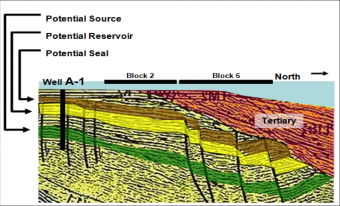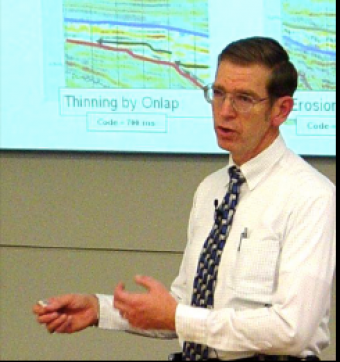In this lesson, students will learn about reservoir rocks, which is the second essential element for a hydrocarbon play. This lesson should follow the lesson on 'source rocks', which is the first essential element for an effective hydrocarbon play. Students will learn about different terms (like porosity and permeability) that help to describe different types of reservoirs (conventional vs. unconventional). In addition, students will learn different geologic terms that will help to define and describe different environments of deposition (EODs).
This lesson can be broken up into three (3) main segments. In the first part, review the exercises presented in 'Source Rocks', which consists of eleven (11) slides and takes about ten (10) minutes to cover. The lecture slides on 'Reservoir Rocks' should be presented next. The presentation consists of thirty-three (33) slides and takes about fifty (50) minutes to cover. Finally, in the third part, the instructor can cover the introduction to the exercise, which takes about eight (8) minutes to explain.
The exercise on shelf margin sands consists of: 1) an eight (8) slide powerpoint to introduce the exercise; 2) a six (6) page Word document, and 3) a Powerpoint with two (2) maps. If the Word document is printed, page three (3) should be in color. If the introduction is printed, all slides should be in color. Also, note that slide 10 of the introduction shows a shelf margin depositional model and is intended to recap where the best sands should be located. The ‘yellow’ facies would be the best candidate for reservoir-quality sands. It is a high-energy environment with wave, tidal and storm action periodically stirring up the sediments, which concentrates the coarser material and winnows out finer grain size sediments. It will concentrate the coarser material, which could be sand or larger grain size clastics. If the sediment source is sand-poor, then it will concentrate fine sand or silt, which would not be reservoir quality. Seismic interpreters use the term 'sand-prone' to indicate their uncertainty as to what the coarsest grain size will be.
The exercise consists of four (4) sequences on the seismic lines, and the student should examine whichever two (2) he/she wants to analyze. The solution has results for all four (4) sequences.
At the end of this lesson, students should be able to:

Stratigraphy is the branch of geology that studies rock layers; structure includes the faults and folds that result from regional & local forces acting on the area. A hypothetical cross section is studied by going back to the beginning to study its progressive geologic history.

Discover the basic methods in finding oil, and the five (5) major components you need to cook, contain, and preserve a resource play.

This course, based on teaching material from Dr. Fred Schroeder (formerly of Exxon/ExxonMobil), reflects on the geology and geophysics basics for the petroleum industry. General geology and basic geophysics are not required, but helpful with the material.